Rain and wet road conditions are perhaps the worst conditions that most drivers will face on a regular basis. Hazards and risks are elevated whenever it starts to rain, or even if roads are still wet from a recent downpour. Many drivers will simply slow down as their only safety precaution when it begins to rain. While reducing speed is a crucial element of how to drive safely in wet conditions, there are several other techniques or considerations that motorists need to be aware of when driving in the rain.
Not to rain on your parade, but heavy downpours can be dangerous: more than half of flood fatalities are vehicle-related, according to the National Weather Service. We asked James Solomon, a subject-matter expert on driver safety at the National Safety Council, to provide some common-sense safety tips for driving in the rain.
1. Drive A Clean Car In Good Condition
When visibility is limited by wet weather, it’s important that your car itself doesn’t impede your sight. Once a month, clean the outsides and insides of windshields and windows, and check your windshield wiper blades for wear. Check the level of your washer fluid once a week.
Solomon also recommends doing a quick check of headlights, taillights, turn signals and tire treads before driving the car for the first time each day. “Rain or no rain, operating without [signal lights], you’re a hazard—and it’s a ticketable offense,” he explains.
2. Know The Roads
Roads are built to withstand different weather conditions in different parts of the country, so if you’re new to an area, use extra caution during or after a storm. In many southern states, “the asphalt isn’t as compressed,” Solomon explains. “This means it can rain and the road can look totally dry, but it’s not. You’ll squeegee up the water that’s caught in the road aggregate, and now your tires are wet and slick and you don’t even know it.”
Take a moment to consider your route, too. If it takes you through low-lying bridge underpasses or past ditches prone to flooding, it might be a good day to take the freeway instead.
3. Switch On Lights, Not Brights
Though many newer cars come with automatic running lights, turn on the actual headlights when using windshield wipers so your taillights come on as well. “The idea behind having headlights is so other people can see you,” says Solomon. “When you turn your headlights on and your back lights come on, you identify all four corners of the vehicle.”
You don’t, however, need to flip on your brights; the brighter light will just reflect off wet surfaces, bouncing back into your eyes and irritating other drivers.
4. Slow Down!
Leave at least five seconds of following distance between your own car and the one in front, and don’t feel pressure to drive the posted speed limit. “The speed [listed] on the side of the highway is the maximum speed for perfect weather and perfect road conditions, so if the road is wet, it could be too fast for existing conditions,” says Solomon. “If other people don’t like it, they can pass you.”
And remember: never use cruise control on wet roads. If you hydroplane under cruise control, the automatic acceleration can cause you to lose control of your vehicle when your tires regain traction.
5. Don’t Get In Too Deep
If water is covering the markings on the road, it’s too deep to drive on. According to Solomon, you can lose control with as little as three inches of water on the road. And even if you manage to stay in control, a larger vehicle could push some of that water underneath your car, causing your engine to stall.
6. Steer Where You Want To Go
If you’re going too fast and end up hydroplaning (which Solomon calls surfboarding or waterskiing, “because that’s what you’re doing”), turn the wheel in the direction you want to go—and don’t be afraid if you don’t steer out of the skid on the first try. It may take three to five adjustments to get back on course (and a little while longer for your heart to stop pounding).
7. Hold Off On Unnecessary Trips
It’s one thing if you need to get home to your children or you’re already on the road, but otherwise, ask yourself if you’ve driven in this kind of weather before and if you’re ready to handle it right now. When bad weather is in the forecast, “a lot of people feel they have to go to the store,” says Solomon. But just as you would stay off the roads in heavy snow, it’s OK to stay home in heavy rain. If you have a small business in a flood-prone area and there’s lots of precipitation on the way, try to make arrangements for employees to work from home so they don’t have to worry about making the commute on potentially flooded roads.
Floods are one of the most common natural disasters in the United States. From getting the right flood insurance to having your house’s pipes checked, find out how to prepare before the big rainstorm hits in our Get Your Home Flood Ready guide.
For more tips on driving in heavy rain and other extreme weather, check out the National Safety Council’s defensive driving courses. Bonus: you could even get a discount on your car insurance for taking one.

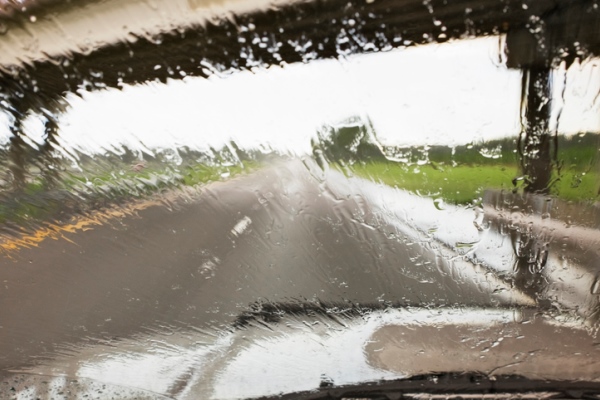

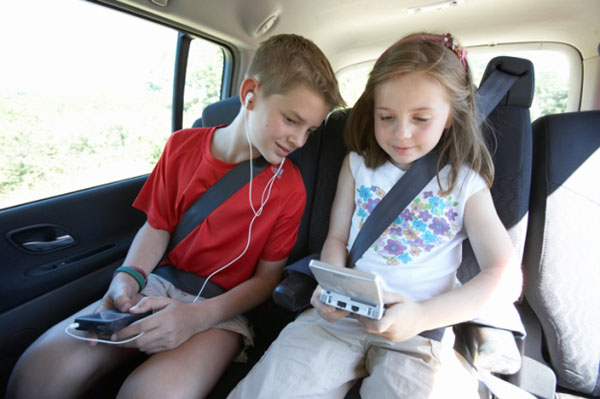
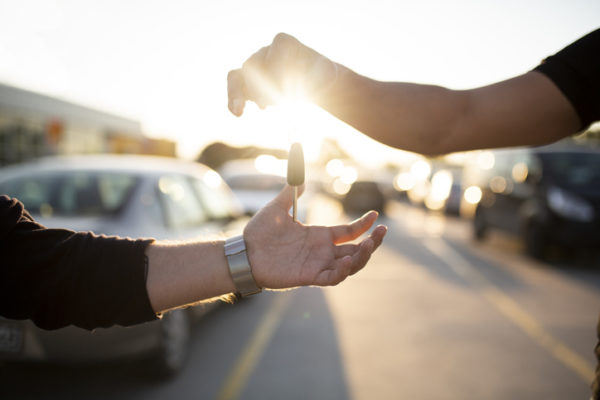
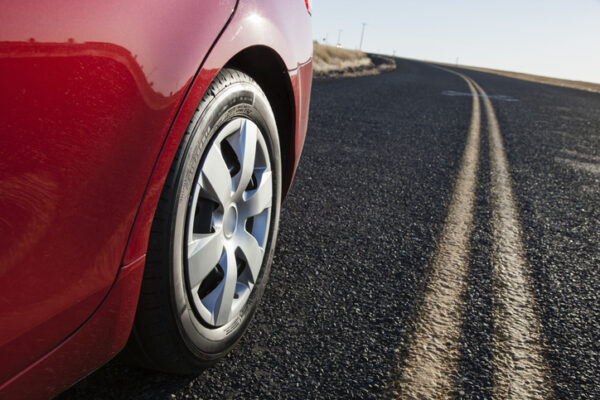
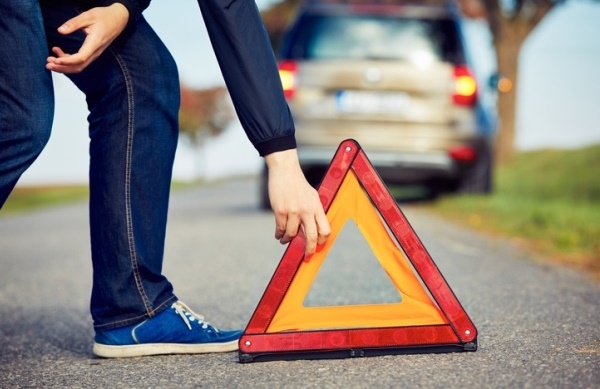

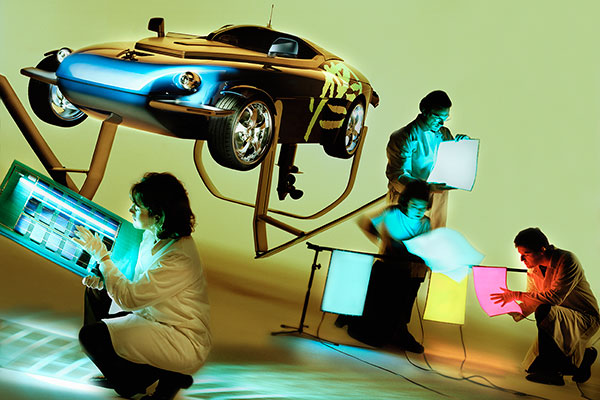
Maureen says,
Thank you
This is helpful information.
Stay safe
Dave S. says,
One risk not mentioned, is that some drivers whose wipers can’t keep up with a torrential downpour [so they’re essentially BLIND] will simply STOP right in front of you. That is truly SCARY! And that’s another reason NOT to follow too closely.
dave jagel says,
very good e-mail. good to have a refresher course. Very good
Jeanne Lambert says,
Thank you for sharing the information on how to drive in the downpour days. Thank you for all those tips which will for sure come in handy but I noted one missing tip and it’s vital to stop a few feet away from the next car in front or at least you can see its tires from your car.
Have a great day!
Barbara A. Delventhal says,
Thank you for these tips re: driving in the rain. I am 80 yrs. old, and my son says is a safe driver, but I can use all of the tips you have. I feel safer. Keep them coming.
Phil Duccini says,
One time I was driving at I-25 in Denver and suddenly, a heavy thunderstorm downpour like waterfall that you cannot see anything out of the windshield. It was a scary moment for about 15 seconds not knowing whether my car will crash ahead of me. I slowed down a little but do not want to stop the car afraid that the car will crash behind me. I keep driving ahead straight and pray that nothing would cause the crash until I was able to see ahead of me as the downpour lessen down. Man, that was the scary moment. What can you do?? Nothing.
Phyllis Andelin says,
Hi Geico Can you recommend a camera for my car? I just purchased a BMW X-1 and find that I cannot see well out of the high back window and the tiny windshield wiper does not give much view either. So I cannot see behind me in the rain.
Trese says,
Thanks for this information. I always wondered why when I moved to Florida there were way more accidents on the highways and streets in the rain here than in the snow in Michigan where I’m from. I thought it was people down here being poor drivers until reading this information. Now, the question is why does rain cause more accidents than snow??? I would surmise because people are more careful in snow. Would love to know the answer if you guys have it.
Bob R says,
Awesome article, I like to see this kind of safety material out in public view hopefully someone will read it. As You can tell by everyone’s bad driving habits all they did was study for there driving exam and once they received there driving permit there was no looking back and never opened a safety manual again and then everyone wonders why our insurance rates are so high .
Sarah says,
All good advice. I heard about no cruise control in heavy rain for the first time at age 60, not soon enough to prevent a bad accident last fall. Luckily no one seriously injured. I posted on Facebook about what I’d learned and was surprised at the number of people who didn’t know it either
CHRIS OCONNOR says,
THANKS FOR THE INFO. KEEP THEM COMING
selvin S Cox says,
Yea badly needed info for Everyone words to literally live by thks keep them comming !
Bob R says,
So how can we spread the word ? How can we get people involved in there own driving safety ?
John Zippay says,
Good tips. Good info.
M. L. Coutermarsh says,
You should not use your cruise when it is raining.
Per Defensive Driving Course.
M. L. Coutermarsh
dick says,
Utah has many parts of I15 at 80 mph